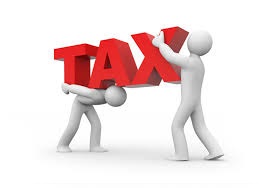The rural development and panchayat raj department is reviewing tax collection methodology and rates to increase revenue and bring more properties under the racket.
With over 99 gram panchayats in Bengaluru Urban and over 50 percent of panchayats in Bengaluru Rural having lost their rural character, the department has decided to tap properties there and this may result in a spike in tax rates.
A recent meeting of elected representatives from Bengaluru concluded the department could earn no less than Rs 1,000 crore additional tax from the city alone if taxes are collected efficiently.
RDPR principal secretary L K Atheeq said the department is preparing a self-assessment scheme (SAS) for panchayats which have lost rural characteristics and have high-rise buildings. It will soon launch an online payment gateway and portal.
“Take, for example, Bangalore North, Electronics City and other outlying areas. All these are urban areas but are part of local panchayats. We can earn more revenue if there is an easy way for the public to assess tax and pay it,” said Atheeq.
The department is reportedly revising the current flat rate of property tax levy to a more dynamic taxation based on type of flooring, roofing and extent of property demarcation.
“This will expand our tax net and bring more revenue,” said Atheeq.
For fiscal 2019-20, outside urban local bodies (ULBs), RDPR has raked in no less than Rs 600 crore. This includes tax on land and building, advertisements, entertainment tax, vehicle tax, water bills and streetlight charges.
While this a considerable increase in tax collection, with previous fiscals seeing only Rs 300 to Rs 400 crore collection, data suggests that many properties have not paid previous taxes and have an overall balance of roughly Rs 1,200 crore.
According to sources, apart from revenue inspectors being paid off to show lower taxes, the bigger challenge is of khathas issued to illegal constructions in rural Karnataka.
“If a gram panchayat issues a khatha to an illegal construction on government land, it gives the owner an official document to pursue a legal case for claiming his right to that land and place it under the Akrama-Sakrama category. This has resulted in 20-30% properties in a village being discounted from the tax net,” said an RDPR official.
With the newly launched central government scheme Svamitva to assess rural properties by using drones, the government hopes to maintain a register of how many properties can be brought under the tax bracket.
A similar exercise is carried out in Bruhat Bangalore Mahanagara Palike (BBMP) limits which issues B khatha to properties on revenue land.
There is an increase in demand for exempting panchayats from paying taxes this year due to pandemic hurting their livelihood.
Atheeq said the government has not taken any decision and will assess the situation later.
Streamlining collection
* While there is no consideration to revise tax rates at present, we’re certainly looking at possible methods to streamline tax collection. Our focus is primarily outskirts of Bengaluru where tax collection has been ineffective.

